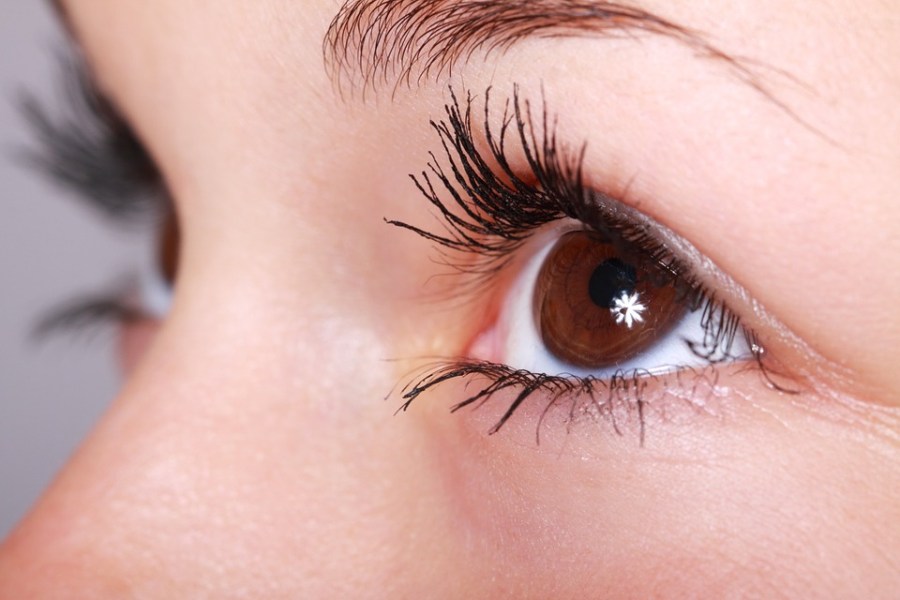
Your eyes are your window to the world, and if something damages them, you could end up with vision loss. In some cases, it could even be permanent. Luckily, many of the most common eye problems aren’t that serious. Even better, they’re easily treated at home or by your primary care doctor or eye doctor with minimal care. If you’ve experienced some eye trouble lately, take a look at these issues to see if you think you may have one of them. You’ll also learn what you can expect from treatment after consulting your doctor.
1. Dry Eyes
When your eyes don’t produce enough tears or they don’t produce enough high-quality tears, you may experience what’s known as dry eyes or dry eye syndrome. Looking at a computer screen for a long period of time, riding in an airplane or spending a long time in an air-conditioned room can aggravate the condition. Symptoms usually include burning, feelings of scratchiness in the eyes, redness, light sensitivity, fatigue, mucus or blurred vision.
In many cases, you can treat dry eyes at home by taking nutritional supplements, such as fish oil, and using over-the-counter drops that create artificial tears. Running a humidifier in your home may help, and your doctor may prescribe medications to help reduce inflammation. For more serious cases, you may require surgery to plug your tear ducts.
2. Conjunctivitis
Conjunctivitis, which is the medical name for pink eye, is one eye issue people are usually familiar with. Essentially, the back of the eyelid becomes inflamed, which creates symptoms like discharge, redness, irritation, itchiness, blurry vision, excess tearing, sensitivity to light and the feeling that something is in your eye. Pink eye can be an infection that spreads from person to person via a virus or bacteria, or you may develop it due to allergies or chemical exposure.
How you got the conjunctivitis determines how to treat it. If it came from exposure to bacteria, your doctor will prescribe antibiotics, drops and ointments, and you should see relief in about four days. If it came from a virus, you’ll simply have to let the illness run its course. For pink eye from an allergic reaction, you can use antihistamines, cold compresses, over-the-counter eye drops and, in some cases, steroid medications from your doctor. For chemical exposure, you’ll need to flush your eyes with saline water, and in some cases, your doctor will prescribe steroids.
3. Eyestrain
Eyestrain is an issue that’s definitely a sign of the times. It’s more common than ever, thanks to the amount of time people spend looking at their computers, TVs and mobile device screens. It can also happen after hours of driving, reading or using your eyes for other intense or repetitive activities for long periods of time. Tiredness, soreness, itchiness and burning are some of the first signs of eyestrain. You may also experience a headache, watery or dry eyes, blurred vision, light sensitivity and even a feeling like you can’t keep your eyes open.
Luckily, eyestrain doesn’t usually become a serious problem. You can correct it with some changes at home. Switch up your working conditions so that you take regular breaks from looking at the computer. Over-the-counter artificial tears may help alleviate symptoms in some cases. You can also try relaxation techniques and neck stretches to help reduce the amount of stress and strain in your head.
4. Presbyopia
Unfortunately, presbyopia is something most everyone will experience in his or her lifetime. In short, it’s the natural decline in vision people begin to see at around age 40, and it continues until around age 65. The main symptoms are blurry vision, trouble reading at a normal distance, eyestrain and headaches. You may find yourself holding a book or other reading material at arm’s length or right in front of your face to see it properly.
There isn’t really a cure for presbyopia because it’s just a natural part of life. However, you can look into reading glasses, contact lenses and LASIK surgery to help make reading a little easier during middle age and beyond.
5. Excess Tears
Anyone who suffers from excess tearing may find him or herself on the receiving end of many questions about looking sad. The truth is that you aren’t sad; your eyes just produce too many tears. For the most part, it’s usually a sign that you’re sensitive to the environment, especially when it’s windy, extremely sunny or cold outside. However, it could also be a sign of something more serious, like an eye infection or a blocked tear duct.
Regardless, all of these causes are easily treated. If you’re sensitive to the elements, wear sunglasses and other protective gear outdoors, especially during extreme weather conditions. For a blocked tear duct, your doctor can, if necessary, perform a surgery that causes the tears to bypass the blocked duct and run into your nasal cavity. For an eye infection, your doctor may prescribe antibiotic drops or ointments, along with warm or cool compresses.





